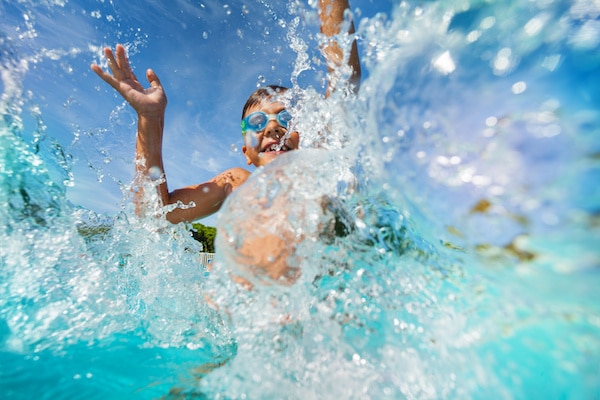The sound of children laughing and splashing in a pool or at the beach is a delight for many parents. Water play is not only enjoyable but also highly stimulating for kids. However, ensuring safety around water is crucial, especially for children on the autism spectrum.
Children with autism may face challenges with sensory processing, understanding danger, and following instructions, increasing the risks associated with water environments. This blog post highlights the importance of water safety for children with autism and offers practical, actionable tips to keep them safe.
Understanding the Risks
Drowning remains a leading cause of death among children with autism, particularly those under 14. Contributing factors include a tendency to wander, an attraction to water, and difficulties in comprehending danger or adhering to safety instructions.
Importance of Supervision
Regardless of your child’s swimming ability, adult supervision is vital when they are near water. Stay within arm’s reach and maintain constant visual contact. Supervision means focusing entirely on your child, free from distractions.
Swimming Lessons
Swimming lessons are a great way to enhance water safety for children with autism. Seek out instructors experienced in working with special needs children. They can tailor lessons to match your child’s abilities and learning style, teaching crucial skills like floating, treading water, and safely exiting the water.
Recent Posts
- Real Families, Real Results: Why AG Behavioral Services Is Transforming Lives Through ABA Therapy
- Understanding Autism in 2025: New Data Reveals Rising Prevalence and Changing Demographics
- “Respond and Expand”: A Simple Way to Boost Communication in Children with Autism
- What Causes Autism? Understanding the Factors Behind ASD
- Are Autism Rates Rising?
Water Safety Education
Incorporate water safety education into your child’s daily routine. Use visual aids, social stories, and role-playing scenarios to explain the potential dangers of water. Emphasize the importance of never approaching water without an adult and always wearing a life jacket when boating or engaging in water sports.
Safety Measures at Home
If you have a home pool, ensure it is fenced with a self-closing, self-latching gate that your child cannot open. Additional safety measures like pool alarms or covers provide extra protection. Remove toys from the pool area when not in use to avoid tempting your child.
Identification
Due to the risk of wandering, ensure your child has identification on them at all times. Options include a wristband, ID card, or GPS tracking device, which can help others identify and understand your child’s needs if they wander off.
Community Support
Inform your neighbors and local first responders that your child has autism and may be attracted to water. This information can facilitate a quick and effective response if your child goes missing.
Practice Emergency Drills
Regularly conduct emergency drills with your child so they know what to do in a water emergency. Teach them how to call for help and use flotation devices.
Water safety for children with autism requires vigilance, preparation, and education, but the peace of mind it provides is invaluable. By implementing these steps, you can ensure your child enjoys water play safely.
Summary
Remember, every child with autism is unique, and their reactions to water can vary. Stay attuned to their needs, fears, and attractions to water, and continuously adapt your strategies to keep them safe. Preventive measures are key to safeguarding your child around water.
AGBS provides ongoing care for children, adolescents, and young adults with autism to improve the quality of their lives. If you would like learn more about how AGBS can help please contact us here , or call 908-913-0443.




